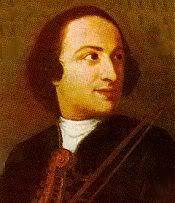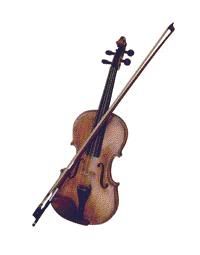Published in the Deccan Herald on August 29, 2005
There is no culture that has not developed music in some form. The general stress on harmony in Western classical music, where multiple notes might play together for a pleasing effect, is not pronounced in Indian classical music, which is more preoccupied with the importance of single notes within a larger sequential context. Japanese gagaku, Korean hyangak or traditional Icelandic music might sound strange to those accustomed to something else but it works for those who live in those countries nevertheless. Each culture needs to produce music for whatever reason.
Various parts of the brain apparently work together in the understanding of melody, harmony and rhythm. Classical music in particular stimulates those parts of the brain that deal with mathematics and spatial reasoning. Those who are musical seem to have an intuitive grasp of mathematics (though - empirically - the converse need not be true) because of the need to process variations in pitch and time.
But science apart, music's peculiar agony is that it thrills and troubles us. Why do we like music? Why are some better at it than others? Why does it drive us mad, motivate us, or cheer us up?
The desperate need for man to want to believe he is not alone in this Universe and has some kind of a benevolent figure or figures watching over him, picking and choosing acts of good and evil, punishing and rewarding and generally keeping an idealistic sense of order has developed the institution of religion.
The effect of music has long been interpreted as a means of communicating with the unseen and unknown. It is no wonder that classical music everywhere has strong roots in the devotional or meditative side of existence - and not always in a positive way.
Music (and even dance) causes a peculiar ecstasy or disconnect with the immediate world and is interpreted as a spiritual flight of fantasy. Whether Gregorian chants or bhajans, Dhrupad or the recitation of shlokas, Buddhist chants or Turkish Sufi music -- the cadence of religious music acts as a pleasing soporific and a temporary escape into a personal mental space that is satisfying because we are trained to believe we are close to the supernatural at that time. The Voodoo ceremonies of the Caribbean, as another example, consider music and dance as an expression of a connection to the spirit world.
The violin was considered an instrument of the Devil and blamed for all manner of abnormal behaviour. Nero continues to be falsely accused of having fiddled while Rome was burning - implying perhaps that he was so absorbed in playing the violin (which hadn't even been invente then, by the way) that he was impervious to everything else around him.
Used as an accompaniment to dance in Europe, the violin was condemned as being a catalyst to bad morals and an agent of the Devil.
Giuseppe Tartini (1692-1770), then the violin's greatest virtuoso, is credited with the Devil's Trill or Devil's Sonata. He claimed that the Devil played it for him in a dream.
I heard a sonata so unusual and so beautiful performed with such mastery and intelligence, on a level I had never before conceived was possible! I was so overcome that I stopped breathing and awoke gasping. Immediately I seized my violin, hoping to recall some shred of what I had just heard - but in vain. The piece I then composed is without doubt my best, the Devil's Sonata, but it falls so far short of the one that stunned me that I would have smashed my violin and given up music forever if I could but possess it.
The Devil's Sonata is indeed quite bizarre and does seem supernatural. Tartini's other work does not resemble this piece at all! One speculates ... when normal dreams are so strange and so quickly forgotten, is it impossible that one hears music in them?
Niccolo Paganini (1782-1840) was another brilliant violinist who was under suspicion because his virtuosity was just a bit too unbelievable. He handled the violin like a toy and could do things with it that no one else could even dream of. The German poet Boerne, after hearing a concert by Paganini, said: 'It was (a) heavenly and diabolical enthusiasm'.
Many believed he was the Devil himself and it did not help that he had dark hair and a pale face. Mme Blavatsky's chilling story, The Ensouled Violin, talks about a violin teacher's determination to have his student get the better of Paganini ('It was rumoured that the strings of his violin were made of human intestines, according to all the rules and requirements of the Black Art') in a duel. He sacrifices his life and forces his student to use his guts as the violin strings.
The story ends with the wraith of the violin teacher rising from the student's violin (His viscera were protruding and the ends of the intestines stretched on the violin). For his pains, Paganini was not allowed a religious burial when he died. His music was not Godly enough - it was too devilish.






No comments:
Post a Comment